The helicopter cut a sharp 180-degree turn as it ascended towards the 5,899-foot summit of Mount Alice. A 30 mile-per-hour gust of wind had hit below us and we needed to make a move. Inside the cabin, the mood was ecstatic, despite the fact that the helicopter had already tried to land twice in the windy conditions. We’d just ripped down 2,000 feet of fresh powder for the 12th time that day. The six of us hoped for one more go before retreating to the lodge for happy hour. We were surrounded by the rocky peaks of British Columbia’s Coast Range, draped in late winter snowfall.
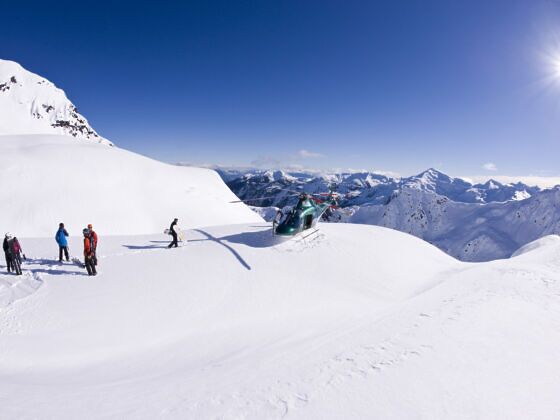
For the Truly Dedicated, Northern British Columbia Is the Best Place in the World to Heli-Ski
My calves were pulsating. I’d nearly lost my voice on the last run, unable to contain my joy as I flung myself off roller after roller onto blankets of untouched snow. By this point in the day, I knew one thing for certain: heli-skiing is everything it’s built up to be.
In early March, I embarked on a four-day heli-ski package with Northern Escape Heli-Skiing, a boutique heli-ski operator based in the northern British Columbia town of Terrace. I’d come to “The North,” as locals call it, to fulfill a dream I’d had since high school. That dream? To hop into a chopper, exit onto a daunting peak, and make my way down on a snowboard. And in Terrace, it was vividly alive.
Why northern British Columbia is the right place to heli-ski
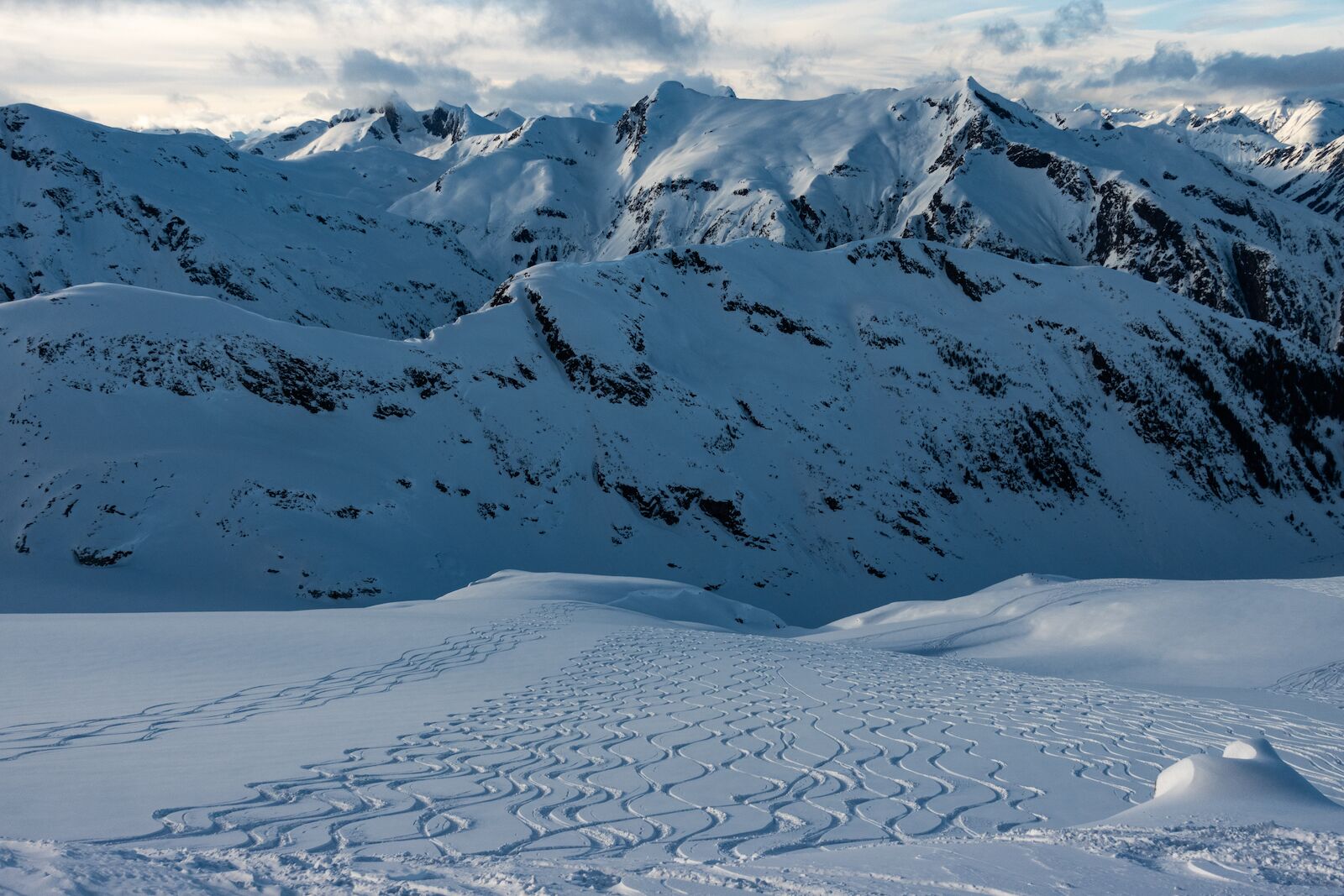
Credit: Louis Pellard
Northern BC is an enchanting place, remote and far-removed from anything that could be described as a big city. This is the land of the Kitselas and Kitsumkalum peoples; to the north, the Nisga’a and Kitseguecla Nations. The expansive, mountainous region — the Coast Range has 2,806 named peaks — has been inhabited for more than 10,000 years. Only recently has outdoor recreation become a major economic driver, and now, heli-ski operators are a major force during the region’s long winter season.
Here, the mountains rise like a fortress from the Pacific. Rocky, white-capped peaks stretch 2,000 feet above treeline, their contoured faces lined with cliffs, couloirs, and open bowls of snow. The jagged peaks, turtlenecked by dense evergreen forest, are defined by steep avalanche chutes that create ribbons of white through the trees. On skis or a snowboard, the terrain is fast. We made 16 laps in the helicopter and measured just slightly more than 28,000 feet of vertical descent on our first day.
With two lodges, two choppers, and snowcats to serve as a backup option when the weather moves in and the helicopters can’t fly, Northern Escape Heli-Skiing has established itself as one of the outfitters that, rather than targeting the poodle-at-the-lodge luxury crowd, caters to skiers and riders looking to hit it hard. And that’s what drew me. Though I traveled to Terrace solo, I knew that my fellow riders would be a group of people passionate about reaching the best skiing terrain available — and as much of it is possible. And that’s exactly what happened when I reached the Yellow Cedar Lodge.
“Our perk here is that we’re able to fly almost every day,” our guide, Troy Grant, told us as we strapped in atop “Durango Nell,” a low-angled run we lapped a few times on the first day. “In Alaska, tours get socked in for days at a time, but we usually don’t have that type of weather here.”
Instead, they have bluebird powder. It’s not uncommon, Grant said, for guests to wake up to three feet of snow. The “classic” package I had joined, which runs from about $3,000 to more than $10,000 depending on when you go and how long you stay, included unlimited vertical. Over four days we took only two snowcat runs below treeline during a brief period of thick morning mist. The rest of the time was spent exploring the vastness of Northern Escape Heli-Skiing’s dedicated terrain by helicopter, which stretches across more than 2,100 square miles of high-alpine peaks. It’s a space nearly the size of Delaware.
Every day is better than the last
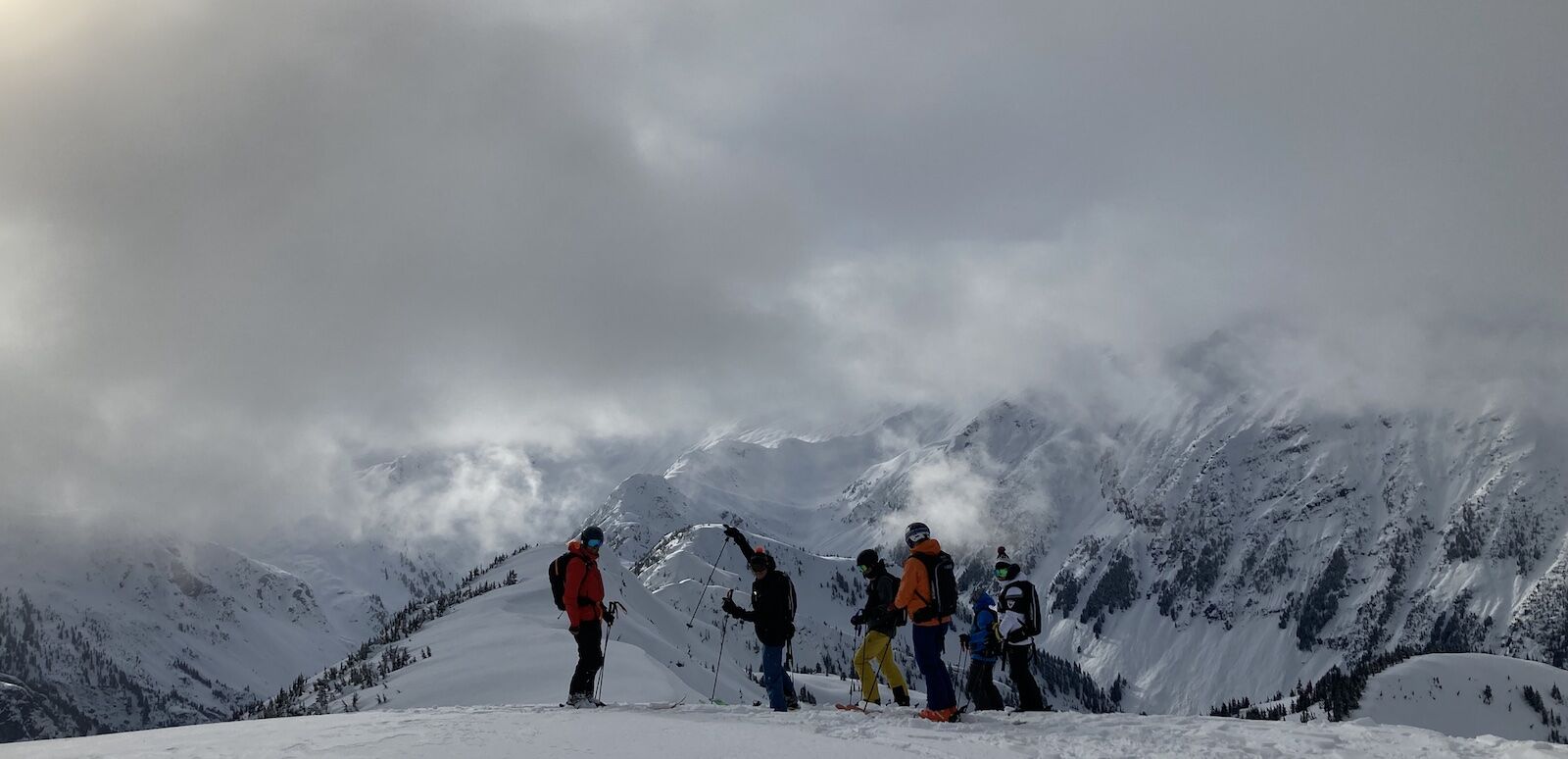
Credit: Tim Wenger
After 16 runs and almost 30,000 vertical feet of descent, my legs were feeling like jelly as I exited the helicopter at the end of the first day. A hot tub had never sounded so good. I grabbed a Sherwood Mountain Lava Red from the bar and suited up for a soak with the rest of my group. Northern Escape’s packages are all-inclusive (sans alcohol), with chef-prepared meals at breakfast and dinner and an après-ski happy hour, complete with gourmet snacks.
The helicopters seat six plus a guide. Because I arrived alone, I joined up with three New Yorkers and a raucous German couple and spent the bulk of my time skiing, soaking, and generally reveling in the experience with them. Paul, a doctor from northern Germany who now resides in Zurich, Switzerland, challenged us each evening to verify the sanctity of the Reinheitsgebot, Germany’s strict beer purity law that ensures beer should contain nothing more than barley, hops, and water. We did this by drinking local IPAs — at least two, most of which have a slew of other ingredients beyond the core four — and reporting how we felt the following morning.
“You should never feel bad after drinking beer,” he maintained — though he himself succumbed to the trendy craft brews on more than one occasion.
Results of the study are ongoing. Still, any bit of hangover or fatigue disappeared when we felt the stoke of seeing the chopper arrive (and felt the cold air and powder on our faces at 9 a.m.) Rising from the banks of the Skeena River to the high alpine in ten minutes, our crew came to favor the banked terrain of Mount Alice and surrounding runs including Chesire Cat, Wonderland, and Simba, all part of a zone called “Promised Land.” Even when we repeated runs, we still had fresh tracks — a benefit of having the terrain entirely to yourself.
Northern Escape Heli-Skiing is a carbon-neutral heli-ski company
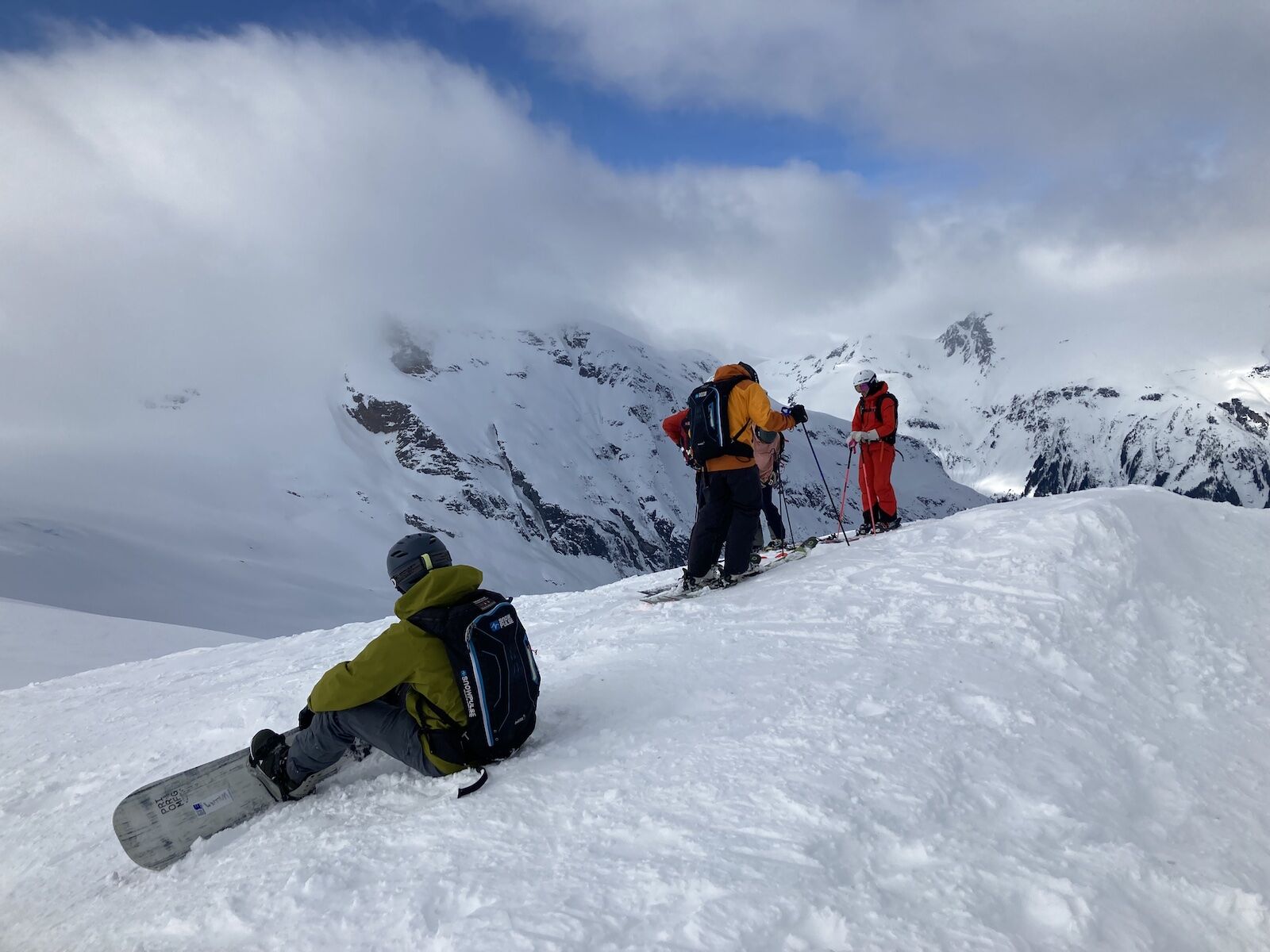
Credit: Tim Wenger
Halfway through each day we’d break for lunch on the mountain at the bottom of a run. This is the only point during the ski day in which we interacted with the other two groups staying at Yellow Cedar Lodge. The two other groups were made up of 12 excellent skiers from Lyon, France. Flying over the tracks in the chopper, we’d repeatedly be wowed by their picture-perfect Euro turns, a stream of tightly wound and seemingly endless S-lines stacked 12 deep across the high country.
We’d lounge over sandwiches and thermoses of soup, sharing stoke from the morning’s adventures while the helicopter went on a refueling run. Choppers burn a lot of fuel – between six and 16 gallons per hour. Over the course of a season, that’s tens of thousands of gallons of fuel guzzled by each heli-ski operator around the globe. In addition to the aggressive riding protocol, the other factor that drew me to Northern Escape Heli-Skiing is that it is one of the few heli-ski companies doing something about its environmental impact.
Northern Escape’s sustainability efforts are aligned with the Greenhouse Gas Protocol, a global framework for companies to measure and address their climate impacts. Along with Synergy Enterprises, which conducted the emissions audit, and Offsetters, which identifies and purchases the carbon offsets, Northern Escape measured its total annual environmental impact in both direct emissions (caused by its operations) and indirect emissions (caused by down-cycle emissions or consumer use of product/service).
The audit found the total daily emissions per Northern Escape skier to be 256 tCO2e (tonnes of carbon dioxide equivalent). Just slightly more than 96 percent of that is from direct emissions, primarily fuel used to fly and maintain the helicopters, as well as operate the company’s lodging, kitchens, and other operations. To offset this impact, Northern Escape Heli-Skiing partners with Great Bear Forest Carbon Project to reduce harvest levels, trap more carbon from the atmosphere, and support Indigenous communities in the area. The company also partners with Brazil’s Lara Ceramic Fuel Switching Project to offset its emissions, swapping firewood with biomass to power a local ceramics plant. The company hopes to do more to address its impact in the future.
This makes Northern Escape a certified carbon-neutral heli-ski operator.
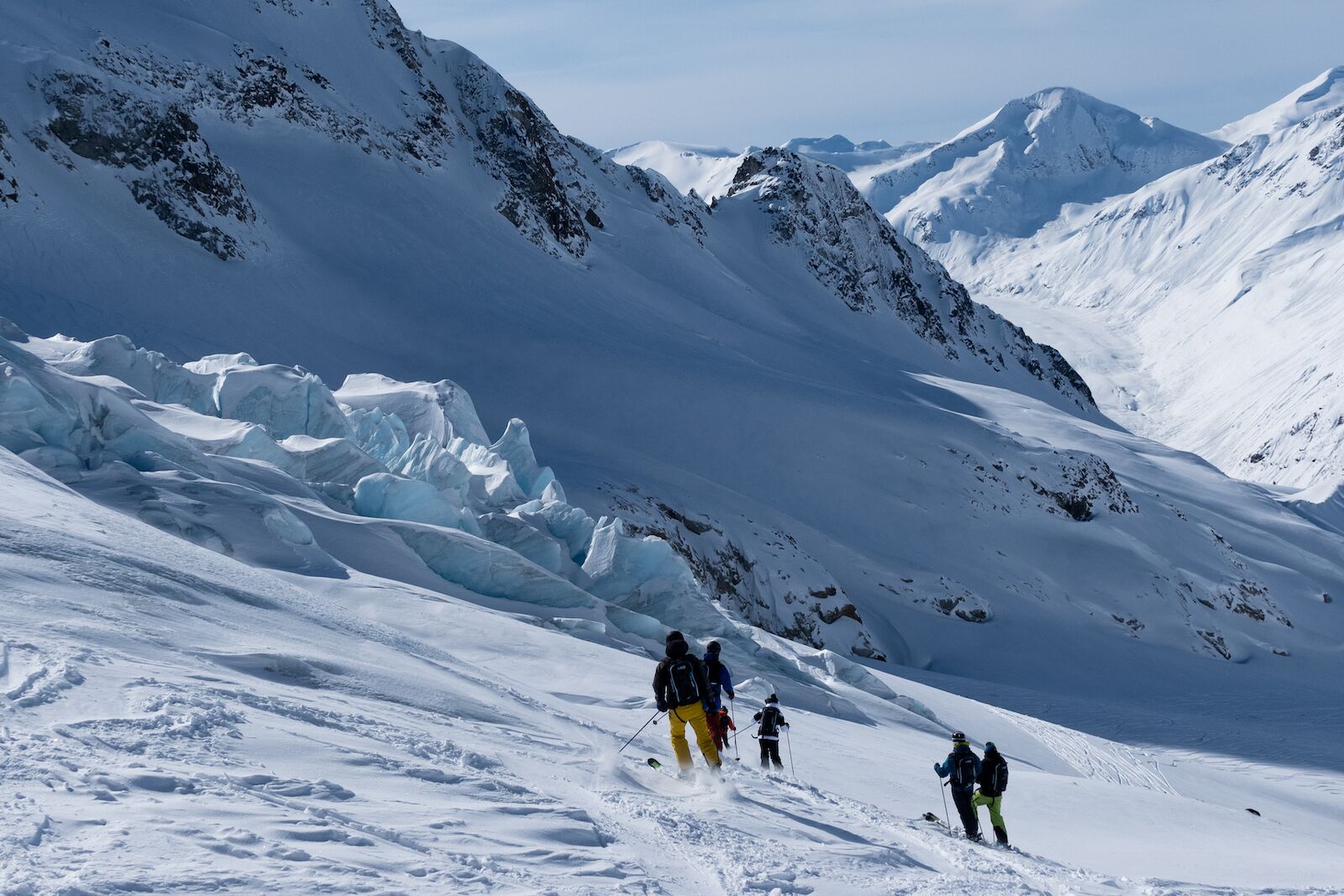
Credit: Louis Pellard
“Purchasing offsets is only an interim solution,” says John Forrest, General Manager at Northern Escape Heli-Skiing. “2021 was the first year of a lifetime journey. This year we are going through a carbon reduction audit and plan and will identify areas we can reduce our carbon footprint going forward. We want to minimize the purchasing of offsets in favor of actual reductions.”
Forrest says the company will do that by increasing the use of solar power and renewable energy at its lodges. It also plans to assess areas where emissions can be reduced and operations optimized on an ongoing basis, with accountability from its third-party partners.
“Since we depend on cold winters and deep powder, it’s in our business interests to not further add to climate change. And it’s also the right thing to do,” Forrest says.
A life’s dream now fulfilled
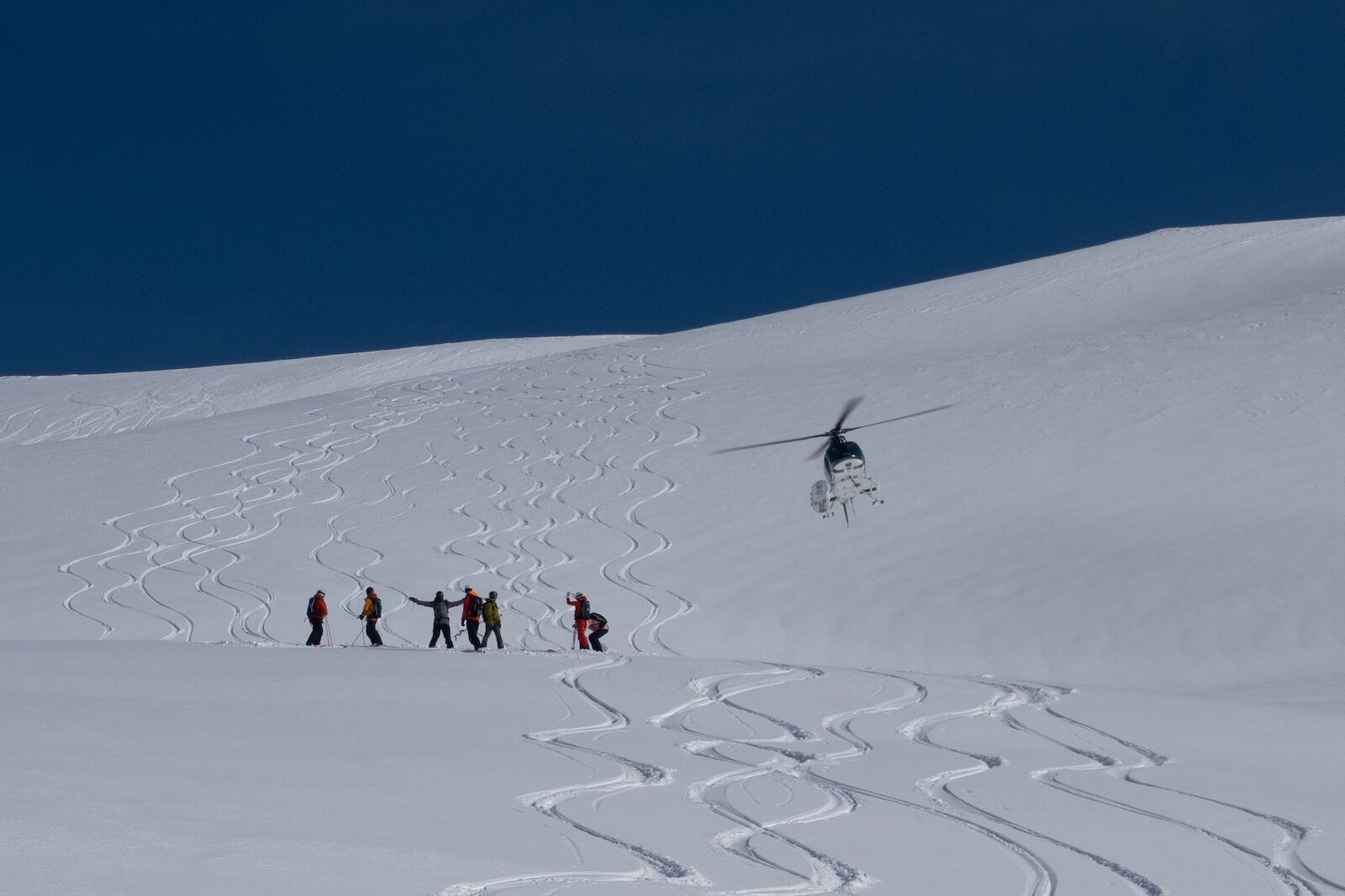
Credit: Louis Pellard
On the fourth and final morning, the guide Troy Grant caught me lightly sobbing in the boot room. My emotions got the best of me at multiple points during this trip, and I also felt it while in the high alpine terrain captivated by the sheer vastness of The North. Snowboarding has been the one constant in my life since my teenage years. In 2002, I saw the photo in Snowboarder magazine of Mike Basich jumping out of a helicopter from 100 feet above an Alaskan peak, board strapped to his feet like some sort of superhuman lunatic. I knew then that I wanted to push the sport as far as I could for myself. Even though I would never do anything that insane, by going on a multi-day heli-ski tour, I had proven to myself that I’d followed through.
As fads have come and gone, I’ve progressed from an angsty teen into an early-twenties lush, then from a young professional to a new dad, but carving lines in the snow has weaved the chapters together like transitions in a good novel. As I carried my board to the chopper on the first morning, I had been overtaken by mixed feelings of bliss, contentedness, and tranquility. It was nearly sublime, knowing before it happened that this would be one of the seminal experiences in my life. The blades spun, we lifted off, and as though these chapters had built to their inevitable climax, I had finally reached the point of no return.